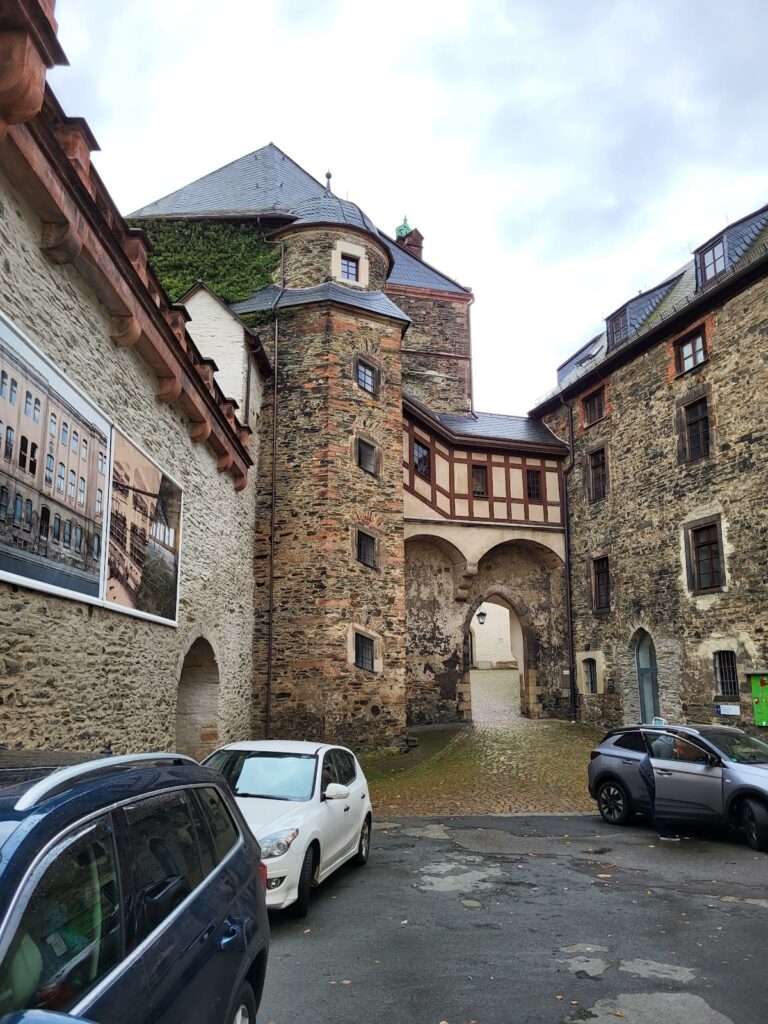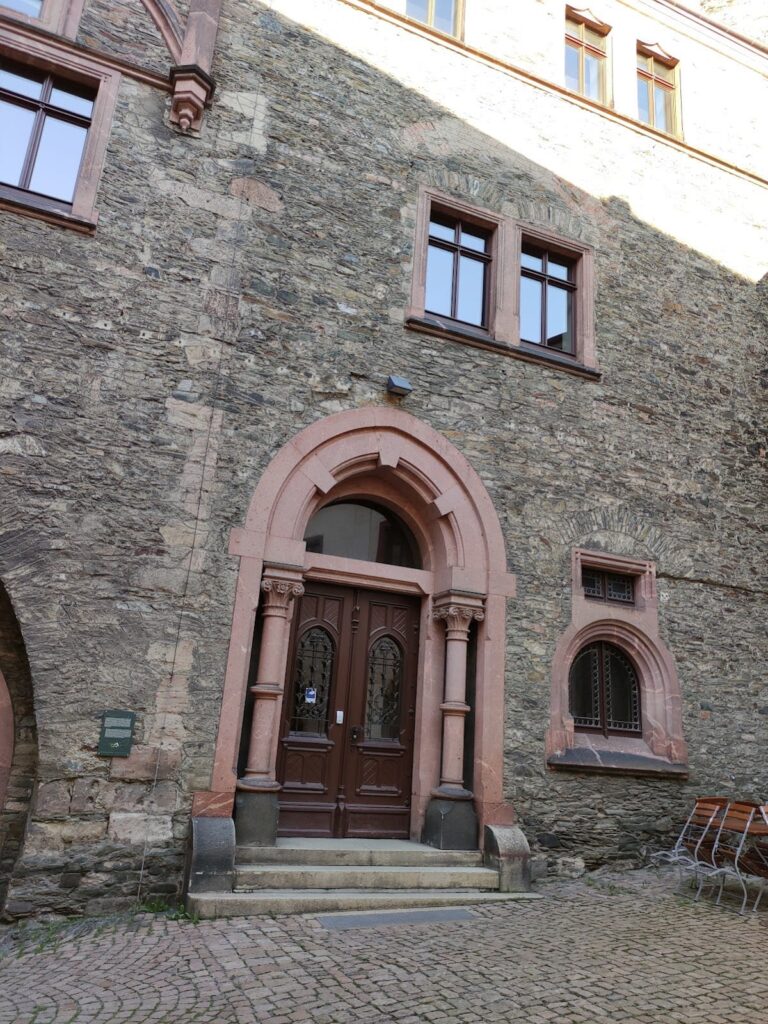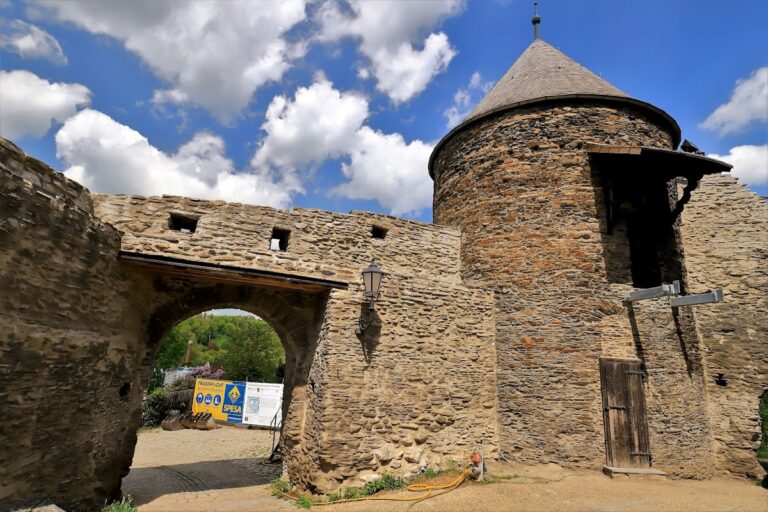Mylau Castle: A Historic Fortress and Museum in Reichenbach im Vogtland, Germany
Visitor Information
Google Rating: 4.5
Popularity: Low
Google Maps: View on Google Maps
Official Website: www.burgmylau.de
Country: Germany
Civilization: Medieval European
Remains: Military
History
Mylau Castle stands on a rocky spur overlooking the meeting point of the Göltzsch river and its tributary, the Seifenbach, in what is now Reichenbach im Vogtland, Germany. It was likely built around 1180 during the German eastward expansion led by Emperor Frederick Barbarossa. The castle served as a fortified base to secure the settlement of mainly Frankish colonists in a region that had been sparsely populated by Slavic peoples.
The earliest known lords of the castle were the Milin family, recorded in 1214. After the Vogtland War from 1354 to 1357, Emperor Charles IV forced the castle’s sale to the Bohemian crown in 1367. That same year, Charles IV granted town rights to the nearby settlement of Mylau and established a royal Bohemian administrative office within the castle, marking its importance as a regional center of governance.
Under Charles IV and his sons Wenceslaus IV and Sigismund, the castle underwent expansions. In 1400, a feud between Wenceslaus IV and the local Vogtland vogts led to partial destruction of the castle. Reconstruction included the addition of two large outer baileys, or enclosed courtyards, enhancing its defenses and administrative capacity.
In 1422, Emperor Sigismund pledged Mylau Castle to the Electorate of Saxony as thanks for support during the Hussite Wars. Except for a period between 1547 and 1569, when a burgrave governed the Vogtland region from the castle, it remained under Saxon control. The castle passed through several noble families, including the Metzsch, Schönberg, Bose, and Planitz families. Notably, Joseph Levin von Metzsch, an early supporter of the Reformation and friend of Martin Luther, served as burgrave in the 16th century.
By the late 1500s, under the Schönberg family, Mylau Castle shifted from a military fortress to a residential estate. It ceased to be an aristocratic residence in 1772 and entered private ownership. Between 1808 and 1828, Christian Gotthelf Brückner operated the first factory in northern Vogtland within the castle walls. Later, from 1868 to 1894, the site housed the Baust calico and wool printing works, undergoing several renovations during this industrial phase.
In 1892, the castle became municipal property. A local castle-building association remodeled it in a historicist style during the late 19th century. The renovated castle served multiple civic functions, including city hall, tavern, and museum. Archaeological excavations have uncovered artifacts dating from the 13th century through modern times. The castle grounds were officially protected as an archaeological monument in 1956.
Since 1883, Mylau Castle has housed a museum featuring natural history collections and exhibits on regional geology, mining, and engineering achievements such as the Göltzsch Viaduct. The museum’s administration evolved over time, and since 2010 it has been managed by the Evangelical School Association Vogtland e.V. A new permanent exhibition was installed in 2014 and 2015, continuing the castle’s role as a cultural and educational site.
Remains
Mylau Castle occupies a narrow rock ridge approximately 80 meters long and 35 meters wide. Originally, it was a single-courtyard fortress surrounded by a dry moat about 10 meters deep. The castle featured four defensive towers, including a prominent 27-meter-high bergfried, or keep, built in the Romanesque style during the initial construction around 1180.
Following damage in 1400, two large outer baileys were added during reconstruction, expanding the castle’s defensive and administrative areas. The late 19th-century renovations introduced a city hall building in the upper courtyard, constructed from rubble stone with decorative elements made of Rochlitz porphyry, a distinctive local volcanic rock. The gable of this building displays the German imperial crown emblem from the era of the German Empire.
Inside the council chamber, visitors find a wood-paneled ceiling and Neo-Renaissance ornamental wall paintings. A marble bust of King Albert is set in the gable field. Stained glass windows dating from 1890 were crafted by the Cologne workshop Schneiders & Schmolz. Above the main gate, a porphyry relief depicts Emperor Charles IV, linking the castle’s historic Bohemian ties.
The castle complex includes a market gate leading to the imperial court. Along this route, informational panels explain architectural features and the castle’s history under the Bohemian kings. The museum within the castle holds the largest natural history collection in the Vogtland region, with exhibits on local geology, mining history, and the construction of the nearby Göltzsch Viaduct.
Today, the castle grounds remain accessible via a hiking trail that offers views of the town of Mylau. The site’s archaeological layers span from the 13th century to modern times, reflecting its continuous adaptation and reuse over centuries. The castle’s protected status ensures the preservation of its historic structures and archaeological remains.










